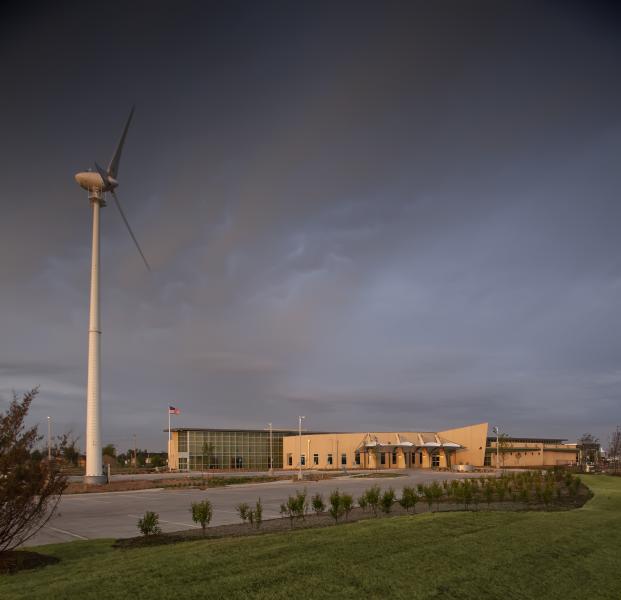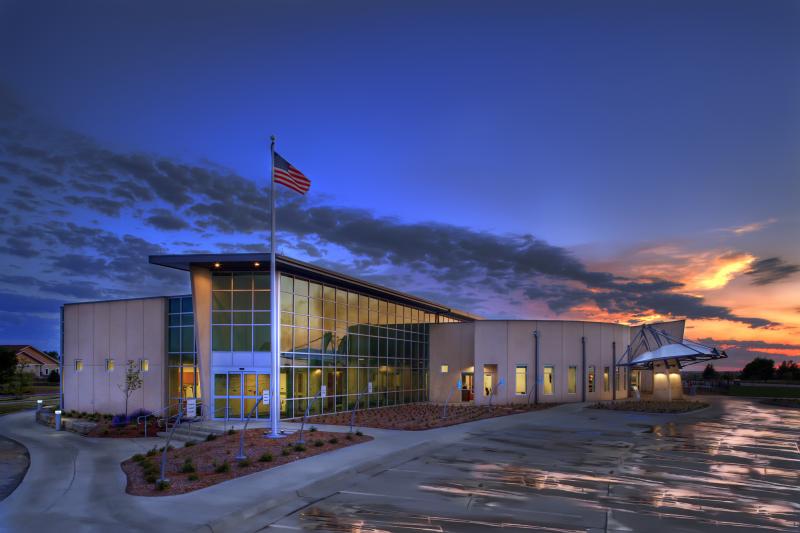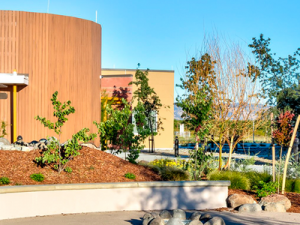Climate stressors and impacts
Because climate change is projected to increase the frequency of severe weather, communities located in regions that have traditionally experienced severe storms need to be particularly well prepared for extreme events.
The city of Greensburg, Kansas, and its hospital—Kiowa County Memorial—have been rebuilding for precisely this sort of resilience after experiencing a catastrophic tornado. On May 4, 2007, an EF-5 tornado estimated to be 1.7 miles wide with 205 mph winds struck Greensburg. Damage to the city was immense: over 90 percent of the structures in the community were severely damaged or destroyed.
The power of wind
In the aftermath of the tornado, the Federal Emergency Management Agency (FEMA) activated the Long-Term Community Recovery (LTCR) program, which integrated assistance from the State of Kansas and federal agencies to support the community’s long-term recovery goals. The program enabled the coordination of resources and planning services supporting the recovery effort. A key element of the effort was a planning process that produced a Long-Term Community Recovery Plan, supporting more resilient and climate-adapted redevelopment.
Before the tornado struck, Greensburg had relied on fossil fuel for electrical generation. With technical assistance from the U.S. Department of Energy and the National Renewable Energy Laboratory, Greensburg converted to receiving 100 percent of its power from wind. The Greensburg Wind Farm includes ten 1.25-megawatt (MW) wind turbines that supply 12.5 MW of renewable power to the town. This energy can power every house, business, and municipal building in Greensburg while also selling power to other Kansas municipalities.
Taking the LEED
Under the Long-Term Community Recovery Plan, all Greensburg buildings must now meet LEED Platinum certification. LEED—which stands for Leadership in Energy & Environmental Design—is a green building certification program that recognizes best-in-class building strategies and practices. The program, run by the non-profit U.S. Green Building Council, has established criteria for different levels of certification. Certification requirements vary for different types of projects (e.g., building construction, interior design, building operations, etc.); teams that are leading building projects can select a LEED certification they want to achieve, and then use the LEED requirements to guide their design and operational decisions.
While striving for Platinum certification for its buildings under the Long-Term Community Recovery Plan, the town initially made an exception for its hospital. However, hospital leadership challenged themselves to deliver a LEED Platinum certified replacement building, and they succeeded.
Kiowa County Memorial Hospital embraces a new approach
According to Kiowa County Memorial administrator Mary Sweet, “The tornado not only destroyed our community and hospital—it caused a major shift in how we make decisions. In rebuilding, we learned not to look at the initial cost only, but to look at environmental impact, long-term cost savings, and sustainable and renewable resources.” In 2011, Kiowa County Memorial became the first U.S. hospital to operate with 100 percent renewable (carbon neutral) energy, and in 2012 it became the first hospital to use captured rainwater to flush toilets. This advanced water conservation strategy requires separate water-supply plumbing for toilets. Because tornados can destroy municipal infrastructure, Kiowa County Memorial also has a second, independent well-water service.
The replacement hospital is the first Critical Access hospital to achieve U.S. Green Building Council LEED Platinum certification, and the second U.S. hospital overall to earn this award. According to energy analysis modeling, the new hospital is 32 percent more energy efficient than an ASHRAE-compliant building of the same size and shape (ASHRAE is an international engineering association that supports sustainable technology for the built environment). Many of the hospital’s efficiency measures were incorporated into the Advanced Energy Design Guide for Small Hospitals and Healthcare Facilities. This energy-efficiency guide was developed by the U.S. Department of Energy’s National Renewable Energy Laboratory in collaboration with national professional societies, and it is a vital tool for designing small, low-energy health care buildings.
Kiowa County Memorial includes a 50 kW on-site wind turbine to provide approximately 40 percent of its total electrical load (or 100 percent of its base load). The hospital uses the Greensburg wind farm to supply the remaining balance of its power needs, and has limited on-site combustion of fossil fuel.




